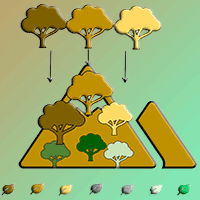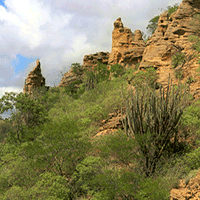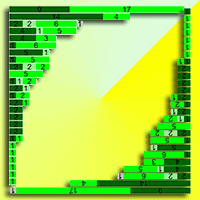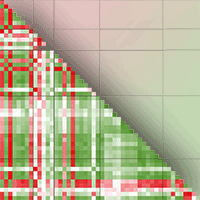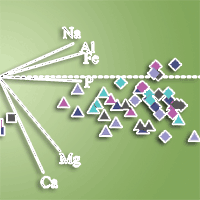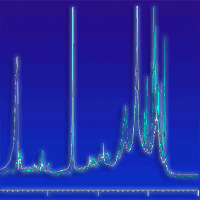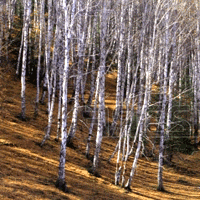Litter decomposition is not fully explained by the general triangle of climate, litter quality and soil decomposers. Therefore, other theoretical frameworks, such as Home-Field Advantage (HFA), have emerged to explain the remaining variation of decomposition. HFA states that litter decomposes faster in their site of origin (home) than far from it (away). However, there are no consistent patterns of HFA and this can varies depending the ecosystem and plant species analyzed. One of the most variable ecosystems in terms of species biodiversity turnover, topography, and soil conditions are the Upper Andean Tropical Forests (UATF), but to date there is no study testing HFA in this ecosystem. Here, HFA was tested through a reciprocal litterbag translocation field experiment across different UATF. The experiment comprised 2520 litterbags placed in 14 20 × 20 m plots that belonged to four sites to analyze decomposition of 15 plant species for 18 months. Of these 15 species, seven were present at only one site. The mean decomposition was calculated for all 15 species to determine the relative decomposition at each site and the decomposition of the seven species at home and away sites was analyzed through two-way ANOVA (sites × species) and linear mixed models. I contrasted environmental charcteristics between sites including litter depth, slope, leaf area index, canopy openness, and microclimatic variables. The results showed that the pattern of decomposition was always the same, no matter the origin of the species and the decomposition period. Microclimate, litter depth, and slope varied between sites, yet these differences were not enough to influence affinity effects of decomposition, as relative decay rates were similar between home and away sites. Overall, no HFA was found in UATF possibly because: (i) strong environmental filters along montane forests homogenize decomposer communities; (ii) high diversity in litters drive decomposers with high ability to degrade different organic compounds; (iii) little adaptation of decomposers to recurrent litter as they respond mainly to changes in litter quality. These results imply that changes in species composition by current anthropogenic pressures could have profound impacts on carbon cycle and nutrient fluxes depending on the identity of species arriving in UATF.
Keywords
, , , , , , ,
Citation
Castillo-Figueroa D (2024). No home-field advantage in upper Andean tropical forests despite strong differences in site environmental characteristics. iForest 17: 286-294. - doi: 10.3832/ifor4518-017
Academic Editor
Michele Carbognani
Paper history
Received: Nov 05, 2023
Accepted: Jun 28, 2024
First online: Sep 27, 2024
Publication Date: Oct 31, 2024
Publication Time: 3.03 months
© SISEF - The Italian Society of Silviculture and Forest Ecology 2024
Open Access
This article is distributed under the terms of the Creative Commons Attribution-Non Commercial 4.0 International (https://creativecommons.org/licenses/by-nc/4.0/), which permits unrestricted use, distribution, and reproduction in any medium, provided you give appropriate credit to the original author(s) and the source, provide a link to the Creative Commons license, and indicate if changes were made.

Breakdown by View Type
(Waiting for server response...)
Article Usage
Total Article Views: 7802
(from publication date up to now)
Breakdown by View Type
HTML Page Views: 4588
Abstract Page Views: 1484
PDF Downloads: 1436
Citation/Reference Downloads: 0
XML Downloads: 294
Web Metrics
Days since publication: 467
Overall contacts: 7802
Avg. contacts per week: 116.95
Article Citations
Article citations are based on data periodically collected from the Clarivate Web of Science web site
(last update: Mar 2025)
Total number of cites (since 2024): 1
Average cites per year: 0.50
Publication Metrics
by Dimensions ©
Articles citing this article
List of the papers citing this article based on CrossRef Cited-by.
(1)
Austin AT, Vivanco L, González-Arzac A, Pérez LI (2014)There’s no place like home? An exploration of the mechanisms behind plant litter-decomposer affinity in terrestrial ecosystems. New Phytologist 204: 307-314.
CrossRef |
Gscholar
(2)
Avella A, Rangel O (2016)Los robledales. In: “Biodiversidad 2016. Estado y Tendencias de la Biodiversidad Continental de Colombia 2016” [Oak forests. In: “Biodiversity 2016. State and Trends of Continental Biodiversity in Colombia 2016] (Moreno LA, Andrade GI, Ruíz-Contreras LF eds). Instituto de Investigación de Recursos Biológicos Alexander von Humboldt, Bogotá, Colombia, pp. 105.
Gscholar
(3)
Ayres E, Steltzer H, Simmons BL, Simpson RT, Steinweg JM, Wallenstein MD, Mellor N, Parton WJ, Moore JC, Wall DH (2009a)Home-field advantage accelerates leaf litter decomposition in forests. Soil Biology and Biochemistry 41: 606-610.
CrossRef |
Gscholar
(4)
Ayres E, Steltzer H, Berg S, Wall DH (2009b)Soil biota accelerate decomposition in high-elevation forests by specializing in the breakdown of litter produced by the plant species above them. Journal of Ecology 97: 901-912.
CrossRef |
Gscholar
(5)
Berg B, McClaugherty CA (2020)Plant litter: decomposition, humus formation, carbon sequestration. Springer, Berlin, Heidelberg, Germany, pp. 569.
Gscholar
(6)
Bezemer TM, Fountain MT, Barea JM, Christensen S, Dekker SC, Duyts H, Van Hal R, Harvey JA, Hedlund K, Maraun M, Mikola J, Mladenov AG, Robin C, De Ruiter PC, Scheu S, Setälä H, Smilauer P, Van Der Putten WH (2010)Divergent composition but similar function of soil food webs of individual plants: plant species and community effects. Ecology 91: 3027-3036.
CrossRef |
Gscholar
(7)
Bradford MA, Berg B, Maynard DS, Wieder WR, Wood SA (2016)Understanding the dominant controls on litter decomposition. Journal of Ecology 104: 229-238.
CrossRef |
Gscholar
(8)
Calbi M, Fajardo-Gutiérrez F, Posada JM, Lücking R, Brokamp G, Borsch T (2021)Seeing the wood despite the trees: exploring human disturbance impact on plant diversity, community structure, and standing biomass in fragmented high Andean forests. Ecology and Evolution 11: 2110-2172.
CrossRef |
Gscholar
(9)
Castillo-Figueroa D (2021)Carbon cycle in tropical upland ecosystems: a global review. Web Ecology 21: 109-136.
CrossRef |
Gscholar
(10)
Castillo-Figueroa D, González-Melo A, Posada JM (2023)Wood density is related to aboveground biomass and productivity along a successional gradient in upper Andean tropical forests. Frontiers in Plant Science 14: 1276424.
CrossRef |
Gscholar
(11)
Castillo-Figueroa D (2024)Litter mixture effects on decomposition change with forest succession and are influenced by time and soil fauna in tropical mountain Andes. Folia oecologica 51: 1-17.
CrossRef |
Gscholar
(12)
Castillo-Figueroa D, Castillo-Avila CC, Moreno-González J, Posada JM (2024)Habitat of two threatened short-tailed whip-scorpions (Arachnida: Schizomida) in the tropical Andes of Northern South America. Journal of Insect Conservation 28: 503-509.
CrossRef |
Gscholar
(13)
De la Riva EG, Prieto I, Villar R (2019)The leaf economic spectrum drives leaf litter decomposition in Mediterranean forests. Plant and Soil 435: 353-366.
CrossRef |
Gscholar
(14)
Duque A, Peña MA, Cuesta F, González-Caro S, Kennedy P, Phillips OL, Calderón-Loor M, Blundo C, Carilla J, Cayola L, Farfán-Ríos W, Fuentes A, Grau R, Homeier J, Loza-Rivera MI, Malhi Y, Malizia A, Malizia L, Martínez-Villa JA, Myers JA, Osinaga-Acosta O, Peralvo M, Pinto E, Saatchi S, Silman M, Tello JS, Terán-Valdez A, Feeley KJ (2021)Mature Andean forests as globally important carbon sinks and future carbon refuges. Nature Communications 12: 2138.
CrossRef |
Gscholar
(15)
Etter A, Andrade A, Saavedra K, Amaya P, Cortés J, Arévalo P (2020)Colombian ecosystems: threats and risks. Editorial Pontificia Universidad Javeriana, Bogotá, Colombia, pp. 63.
Gscholar
(16)
Fanin N, Lin D, Freschet GT, Keiser AD, Augusto L, Wardle DA, Veen GF (2021)Home-field advantage of litter decomposition: from the phyllosphere to the soil. New Phytologist 231: 1353-1358.
CrossRef |
Gscholar
(17)
Farley K, Kelly E, Hofstede R (2004)Soil organic carbon and water retention after conversion of grasslands to pine plantation in the Ecuadorian Andes. Ecosystems 7: 729-739.
CrossRef |
Gscholar
(18)
Gießelmann UC, Martins KG, Brändle M, Schädler M, Marques R, Brandl R (2011)Lack of home-field advantage in the decomposition of leaf litter in the Atlantic rainforest of Brazil. Applied Soil Ecology 49: 5-10.
CrossRef |
Gscholar
(19)
Homeier J, Seeler T, Pierick K, Leushcner C (2021)Leaf trait variation in species-rich tropical Andean forests. Scientific Reports 11: 9993.
CrossRef |
Gscholar
(20)
Hurtado-M AB, Echeverry-Galvis MA, Salgado-Negret B, Muñoz JC, Posada JM, Norden N (2021)Little trace of floristic homogenization in peri-urban Andean secondary forests despite high anthropogenic transformation. Journal of Ecology 109: 1468-1478.
CrossRef |
Gscholar
(21)
IDEAM (2023)Boletín de seguimiento Fenómeno El Niño y La Niña [El Niño and La Niña phenomenon monitoring bulletin]. Instituto de Hidrología Meteorología y Estudios Ambientales - IDEAM, web site.
Online |
Gscholar
(22)
IDEAM (2024)Características climatológicas de ciudades principales y municipios turísticos. [Climatological characteristics of major cities and tourist municipalities]. Instituto de Hidrología Meteorología y Estudios Ambientales - IDEAM, web site.
Online |
Gscholar
(23)
Jacob M, Viedenz K, Polle A, Thomas FM (2010)Leaf litter decomposition in temperate deciduous forest stands with a decreasing fraction of beech (
Fagus sylvatica). Oecologia 164: 1083-1094.
CrossRef |
Gscholar
(24)
JASP Team (2023)JASP (version 0.17.20). Web site.
Online |
Gscholar
(25)
Jewell MD, Shipley B, Paquette A, Messier C, Reich PB (2015)A traits-based test of the home-field advantage in mixed-species tree litter decomposition. Annals of Botany 116: 781-788.
CrossRef |
Gscholar
(26)
Keiser A, Keiser DA, Strickland MS, Bradford MA (2014)Disentangling the mechanisms underlying functional differences among decomposer communities. Journal of Ecology 102: 603-609.
CrossRef |
Gscholar
(27)
Lin D, Dou P, Yang G, Qian S, Wang H, Zhao L, Yang Y, Mi X, Ma K, Fanin N (2020)Home-field advantage of litter decomposition differs between leaves and fine roots. The New Phytologist 227: 995-1000.
CrossRef |
Gscholar
(28)
Looby CI, Martin PH (2020)Diversity and function of soil microbes on montane gradients: the state of knowledge in a changing world. FEMS Microbiology Ecology 96: fiaa122.
CrossRef |
Gscholar
(29)
Makkonen M, Berg MP, Handa IT, Hättenschwiler S, Van Ruijven J, Van Bodegom PM, Aerts R (2012)Highly consistent effects of plant litter identity and functional traits on decomposition across a latitudinal gradient. Ecology Letters 15: 1033-1041.
CrossRef |
Gscholar
(30)
Moser G, Leuschner C, Hertel D, Graefe S, Soethe N, Jost S (2011)Elevation effects on the carbon budget of tropical mountain forests (S Ecuador): the role of the belowground compartment. Global Change Biology 17: 2211-2226.
CrossRef |
Gscholar
(31)
Myers N, Mittermeier RA, Mittermeier CG, Da Fonseca GAB, Kent J (2000)Biodiversity hotspots for conservation priorities. Nature 403: 853-885.
CrossRef |
Gscholar
(32)
Myster RW (2021)Introduction. In: “The Andean Cloud Forest” (Myster RW ed). Springer, Cham, Switzerland, pp. 1-23.
Gscholar
(33)
Njoroge DM, Dossa GGO, Ye L, Lin X, Schaefer D, Tomlinson K, Zuo J, Cornelissen JHC (2023)Fauna access outweighs litter mixture effect during leaf litter decomposition. The Science of the Total Environment 860: 160190.
CrossRef |
Gscholar
(34)
Nottingham A, Fierer N, Turner B, Whitaker J, Ostle N, McNamara N, Bardgett R, Left J, Salinas N, Silman M, Kruuk L, Meir P (2018)Microbes follow Humboldt: temperature drives plant and soil microbial diversity patterns from the Amazon to the Andes. Ecology 99: 2455-2566.
CrossRef |
Gscholar
(35)
Oliva RL, Veen GF, Tanaka MO (2023)Soil nutrient dissimilarity and litter nutrient limitation as major drivers of home field advantage in riparian tropical forests. Biotropica 55: 628-638.
CrossRef |
Gscholar
(36)
Olson JS (1963)Energy storage and the balance of producers and decomposers in ecological systems. Ecology 44: 322-331.
CrossRef |
Gscholar
(37)
Palozzi JE, Lindo Z (2018)Are leaf litter and microbes team players? Interpreting home-field advantage decomposition dynamics. Soil Biology and Biochemistry 124: 189-198.
CrossRef |
Gscholar
(38)
Pierick K, Leuschner C, Homeier J (2021)Topography as a factor driving small-scale variation in tree fine root traits and root functional diversity in a species-rich tropical montane forest, New Phytologist 30: 129-138.
CrossRef |
Gscholar
(39)
Pinos J, Studholme A, Carabajo A, García C (2017)Leaf litterfall and decomposition of
Polylepis reticulata in the treeline of the Ecuadorian Andes. Mountain Research and Development 37: 87-96.
CrossRef |
Gscholar
(40)
Prentice IC, Farquhar G, Fasham M, Goulden M, Heimann M, Jaramillo V, Kheshgi HS, Le Quéré C, Scholes RJ, Wallace DWR (2001)The carbon cycle and atmospheric carbon dioxide. Cambridge University Press, Cambridge, UK, pp. 237.
Online |
Gscholar
(41)
Pugnaire FI, Aares KH, Alifriqui M, Bråthen KA, Kindler C, Schöb C, Manrique E (2023)Home-field advantage effects in litter decomposition is largely linked to litter quality. Soil Biology and Biochemestry 184: 109069.
CrossRef |
Gscholar
(42)
Seidelmann KN, Scherer-Lorenzen M, Niklaus PA (2016)Direct
vs. microclimate-driven effects of tree species diversity on litter decomposition in young subtropical forest stands. PLoS One 11: e0160569.
CrossRef |
Gscholar
(43)
St John MG, Orwin KH, Dickie IA (2011)No “home” versus “away” effects of decomposition found in a grassland-forest reciprocal litter transplant study. Soil Biology and Biochemistry 43: 1482-1489.
CrossRef |
Gscholar
(44)
Sun Y, Zhao S (2016)Leaf litter decomposition in urban forests: test of the home-field advantage hypothesis. Annals of Forest Science 73: 1063-1072.
CrossRef |
Gscholar
(45)
Tanner EVJ, Vitousek PM, Cuevas E (1998)Experimental investigation of nutrient limitation of forest growth on wet tropical mountains. Ecology 79: 10-22.
CrossRef |
Gscholar
(46)
Van Den Brink L, Canessa R, Neidhardt H, Knüver T, Rios RS, Saldaña A, Cavieres LA, Oelmann Y, Bader MY, Tielbörger K (2023)No home-field advantage in litter decomposition from the desert to temperate forest. Functional Ecology 37: 1315-1327.
CrossRef |
Gscholar
(47)
Veen GF, Freschet GT, Ordonez A, Wardle DA (2015)Litter quality and environmental controls of home-feld advantage efects on litter decomposition. Oikos 124: 187-195.
CrossRef |
Gscholar
(48)
Veen GF, Keiser AD, Van Der Putten WH, Wardle DA (2018)Variation in home-field advantage and ability in leaf litter decomposition across successional gradients. Functional Ecology 32: 1563-1574.
CrossRef |
Gscholar
(49)
Vitousek PM, Matson PA, Turner DR (1988)Elevational and age gradients in Hawaiian montane rainforest: foliar and soil nutrients. Oecologia 77: 565-570.
CrossRef |
Gscholar
(50)
Vivanco L, Austin AT (2008)Tree species identity alters forest litter decomposition through long-term plant and soil interaction in Patagonia, Argentina. Journal of Ecology 96: 727-736.
CrossRef |
Gscholar
(51)
Werner FA, Homeier J (2015)Is tropical montane forest heterogeneity promoted by a resource-driven feedback cycle? Evidence from nutrient relations, herbivory and litter decomposition along a topographical gradient. Functional Ecology 29: 430-440.
CrossRef |
Gscholar
(52)
Wilcke W, Yasin S, Abramowski U, Valarezo C, Zech W (2002)Nutrient storage and turnover in organic layers under tropical montane rain forest in Ecuador. European Journal of Soil Science 53: 15-27.
CrossRef |
Gscholar
(53)
Wilcke W, Oelmann Y, Schmitt A, Valarezo C, Zech W, Homeier J (2008)Soil properties and tree growth along an altitudinal transect in Ecuadorian tropical montane forest. Journal of Plant Nutrition and Soil Science 171: 220-230.
CrossRef |
Gscholar
(54)
Wild J, Kopecky M, Macek M, Jankovec J, Haase T (2019)Climate at ecologically relevant scales: a new temperature and soil moisture logger for long-term microclimate measurement. Agricultural and Forest Meteorology 268: 40-47.
CrossRef |
Gscholar
